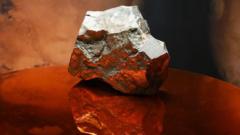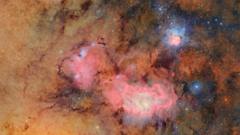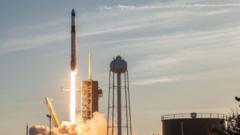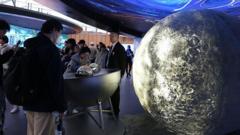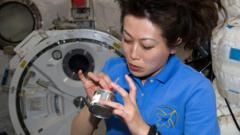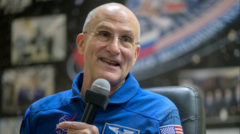As part of its lunar ambitions, Sierra Space is testing a revolutionary device that mimics lunar conditions to produce oxygen from regolith, with plans to ultimately support astronauts' needs on the moon and streamline resources for space exploration.
Sierra Space Pursues Lunar Oxygen Production Technology
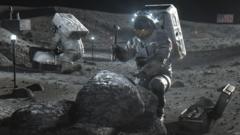
Sierra Space Pursues Lunar Oxygen Production Technology
Engineers at Sierra Space are taking vital steps to develop the technology needed for oxygen production on the moon, paving the way for future lunar missions.
Inside a massive spherical chamber, the engineers at Sierra Space are making headway on a groundbreaking project aimed at generating oxygen on the moon. Their intricate metallic apparatus, detailed with a network of vibrant wires, is engineered to replicate lunar dust conditions to facilitate oxygen production. By simulating the regolith, a rugged mix of lunar dust, engineers end up with a malleable substance that is heated to extreme temperatures, leading to oxygen-rich molecular formation upon the introduction of reactants.
"We feel we've mastered the basics on Earth, and the next horizon is launching to the moon," stated Brant White, program manager for Sierra Space. This experiment, conducted at NASA's Johnson Space Center, marks a significant stride toward ensuring oxygen supplies for astronauts on future lunar bases. Apart from breathing supplies, the extracted oxygen is crucial for generating rocket fuel for long-range missions, potentially including excursions to Mars.
The lunar surface offers metal-rich resources, and in addressing how to harvest these effectively, experts point to the need for efficient extraction reactors. “The project could notably shrink mission expenditures," White highlighted, stressing that relying on Earth-sourced metal and oxygen would incur heavy costs and logistical challenges.
In July and August, Sierra Space's chamber expertly simulated the moon’s unique temperatures, pressures, and even its vacuum environment. Over time, engineers have adapted their systems to handle the abrasive properties of regolith, which poses real mechanical challenges. “It can infiltrate everything and cause wear and tear,” Mr. White explained. The critical real-world test for their technology may not occur until 2028, utilizing actual lunar regolith and low-gravity scenarios.
Researchers, including Paul Burke from Johns Hopkins University, voiced concerns regarding the practicalities of extracting oxygen under reduced gravity. Their findings on molten regolith electrolysis indicated that the lunar conditions could hinder oxygen bubble formation and release. While solutions such as vibration mechanisms and smoother electrodes have been suggested, Sierra Space's carbothermal method generates oxygen bubbles more freely, minimizing risks of stasis.
Dr. Burke assessed that each astronaut would require two to three kilograms of regolith per day to sustain oxygen levels, although efficient life support recycling systems could ease this demand. Ultimately, the oxygen generated will also serve as an oxidizer for rocket fuel, instrumental in ambitious explorations beyond the moon.
In parallel, innovations at the Massachusetts Institute of Technology (MIT) focus on extracting both oxygen and metals, rendering future outbound missions even more feasible. PhD candidate Palak Patel mentioned a novel approach using a “sonicator” to solve the low gravity bubble detachment issue in their molten electrolysis system.
Moreover, the versatility of lunar regolith extends beyond mere oxygen production. Patel noted advances in transforming regolith into strong, usable materials that could be employed for lunar construction—envisioning robust structures that would not only support habitation on the moon but also serve strategic missions in the wider solar system.

